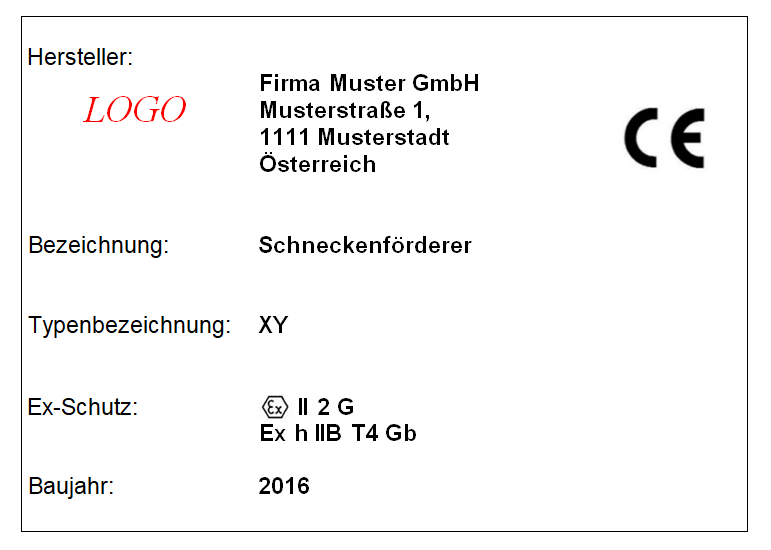02.02.20
What must an employer take into account when purchasing equipment, machinery, plant or systems?
Complete systems must be assessed by the manufacturer within the framework of the directives that bring them into circulation (CE directives) and equipped with appropriate protective measures.
When equipment is used within defined hazardous areas, a purchaser must assess its suitability in terms of the ATEX Directive 2014/34/EU for equipment and protective systems for intended use in hazardous areas.

The suitability in the sense of the ATEX Directive 2014/34/EU for equipment and protective systems for intended use in potentially explosive atmospheres concerns: explosion group, equipment category, temperature class and, if necessary, further product-specific restrictions, which are concretized by technical standards (ISO 80079 series, EN 60079 series, etc.). Relevant information can be found on the type plate on the product and must also be marked there.
The following table compares the Ex zones and the corresponding requirements for the device category:
Zone according to Directive 1999/92/EC |
(permitted) equipment category according to
|
|
Zone 0 or Zone 20 |
Category 1 equipment |
|
Zone 1 or Zone 21 |
Category 1 or Category 2 equipment |
|
Zone 2 or Zone 22 |
Category 1, Category 2 or Category 3 equipment |
It must also be assessed to what extent new equipment, machinery, installations or systems and new working, production methods or processes may have an impact on existing explosion zones or require additional classification. You can find out when an update of the explosion protection document is necessary in our Part 2 of the information series.
In general, it can be assumed that equipment, machines and systems that comply with the directives and are used in accordance with their intended purpose, which can themselves generate an explosive atmosphere or which can only restrict this atmosphere to the inside of the system (encapsulation), are equipped with appropriate protective measures and user specifications.
However, changes in the explosion protection document caused by their use may affect systems and conditions beyond its delivery limit and thus make additional measures necessary. Specifications such as operating conditions, test and maintenance intervals, personnel requirements, specifications for recurring leak tests, pipe and fitting systems, seals, etc. and their feasibility are also of particular importance for an operator. These can be an "essential" prerequisite for an Ex-zone exclusion or the evaluation of a low-rated Ex-zone.
In many cases, the preparation of detailed requirement profiles or well thought-out safety concepts prior to the purchase of equipment, assemblies or systems and/or the investment in safety-related systems of higher quality can considerably reduce the expenditure for periodic activities/tests to maintain a legal minimum level of protection.
We would be pleased to support you in the purchase and inspection of equipment and evaluate the impact on your explosion protection document.
